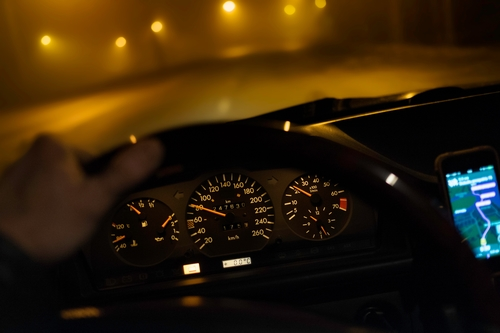Most drivers are probably guilty of noticing their check engine light but failing to bring it into the auto shop right away. The car seems to be running fine, so how bad could it be? It’s tempting to keep driving and tell yourself you’ll get repairs some day next week when it’s more convenient.
Be grateful that your vehicle can detect when certain things are wrong. A lot of car problems do not trigger any kind of warning light. The reasons for a check engine light are legit concerns. You can prevent worsening damage by coming in for auto repairs sooner than later.
So, don’t panic because of a check engine light—but don’t put black tape over it, either.
“Minor” Problems that Cause a Check Engine Light
 You might have been told that your check engine light probably just means the gas cap is loose. Indeed, this is a common cause. But it’s not as harmless as it sounds.
You might have been told that your check engine light probably just means the gas cap is loose. Indeed, this is a common cause. But it’s not as harmless as it sounds.
A loose gas cap means that your fuel pressure is lowered and fumes can escape. Your miles-per-gallon will be less while you keep driving. If the gas cap has cracks or won’t click into place, buy a new one and have a mechanic install it if you need help.
Another weird reason for a check engine light would be sensors that malfunction when wet. This annoyance will get worse if you fail a smog check because of the warning light. More importantly, you could have a water leak causing spark plugs to short. Get an auto inspection to troubleshoot.
When a Check Engine Light Is Serious
Many causes of a check engine light only require a small, cheap repair or replacement part. However, ignoring the dashboard light could cause catastrophic failure down the road.
Among the most common reasons for a check engine light:
- Bad spark plugs or ignition coils
- Bad spark plug wires
- Broken oxygen sensor
- Catalytic converter problems
- Mass air flow (MAF) sensor problems
- Engine thermostat broken
- Evaporative emissions (EVAP) problems
What to Do for a Check Engine Light
Start with an on-board diagnostics test (OBD-II). You can buy the device for yourself, or just head over to your local auto repair shop and we’ll do it for you. The reading will give us a code and brief description.
On its own, the OBD-II code isn’t enough to decide on a specific repair. The diagnostics only indicate the symptom. A professional mechanic should investigate further to make sure the problem isn’t an indirect symptom of some other issue, and to advise you about repair and replacement options.
You don’t need to know everything about a check engine light, but it’s good to learn why your vehicle got the light. At All Around Auto Repair, we will be happy to explain in plain language what happened and why.
Contact us to ask a question or schedule service, or call 707.837.0646 to speak with our staff about getting rid of a check engine light in the Santa Rosa, CA area.

